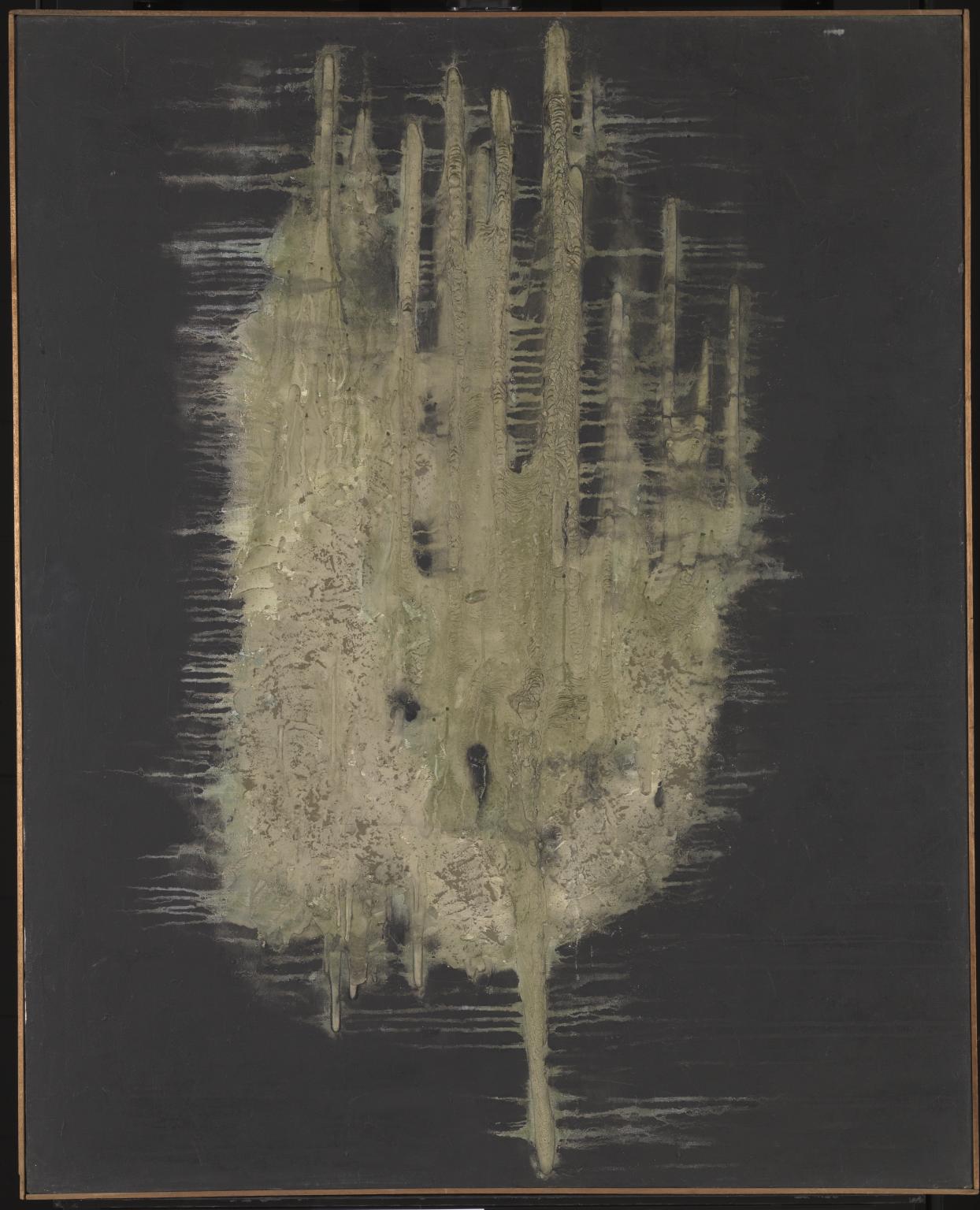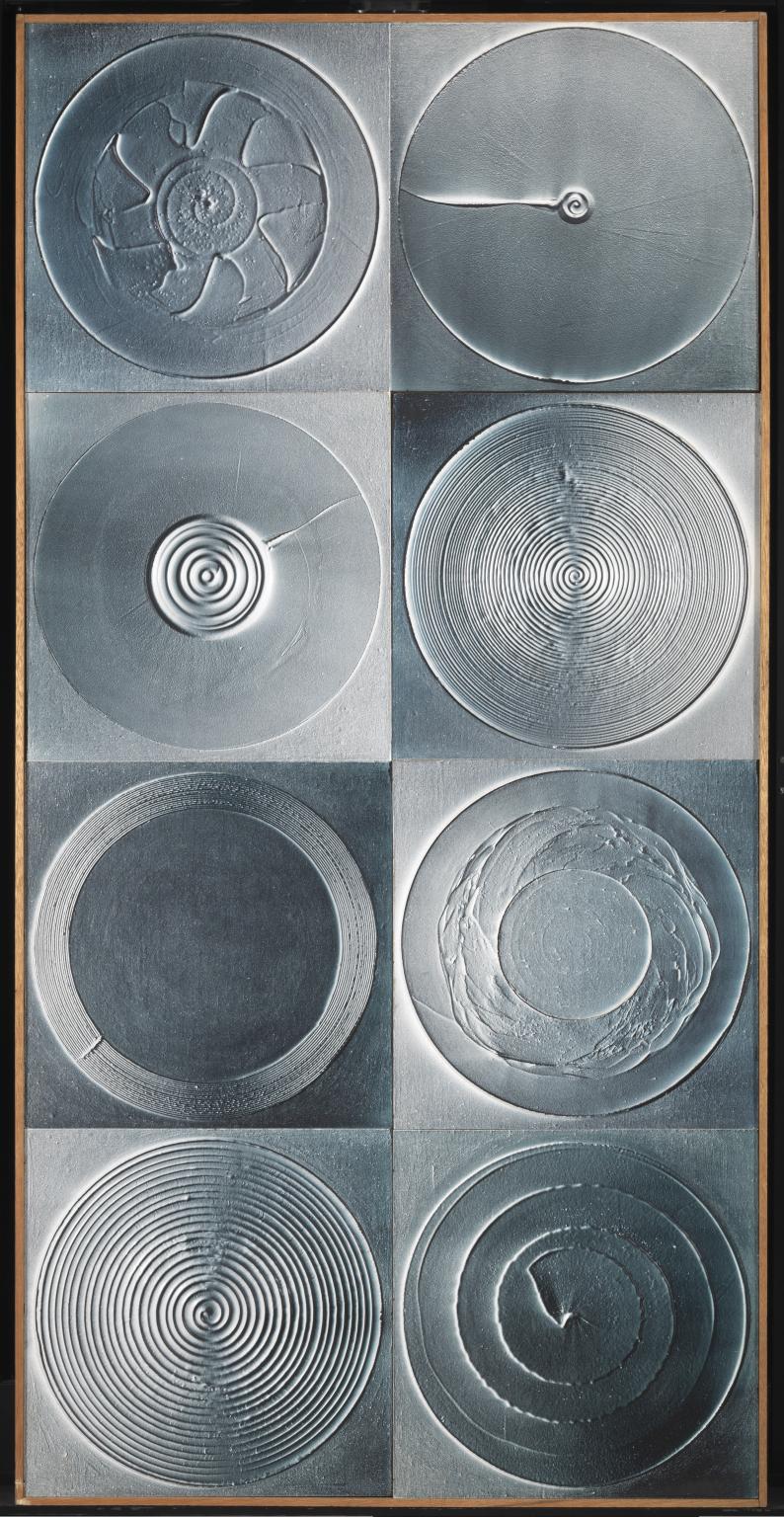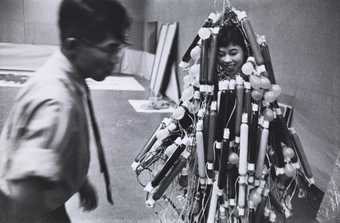9 rooms in Performer and Participant
Learn how the Gutai artists playfully experimented with expanded forms of painting, performance and installation
The Gutai Bijutsu Kyokai (Gutai Art Association) was founded by Yoshihara Jirō in 1954. The group was based in the city of Ashiya, in western Japan. The spirit of the individual was central to their philosophy. During the Second World War, Japan’s totalitarian regime had promoted a unified national identity. Personal expression was stifled. Following the war, Gutai pursued artistic experimentation, freedom and individuality. Yosihara called on members to ‘do what no one has done before!’
Gutai means the physical embodiment of an idea. The term comes from ‘gu’, meaning tool or a way of doing something, and ‘tai’ meaning a body. Actions and materials were equally important to the artists. Although they worked in different styles, Gutai artists were united by their experimental approaches. They rejected traditional methods of making, choosing to paint with bare feet, watering cans, homemade cannons and even remote-controlled machines. Their artworks or ‘performance paintings’ live on as records of the actions that produced them. The acts of making remain as significant as the resulting artworks.
The group further disrupted tradition by staging exhibitions outside the confines of the gallery. They held exhibitions in public parks, on stage, even in the sky. Much of their work was site-specific and ephemeral, aiming to ‘bring art into lived time’. Today these works exist only as documentary photographs, many of which are included in this display.
Art in this room
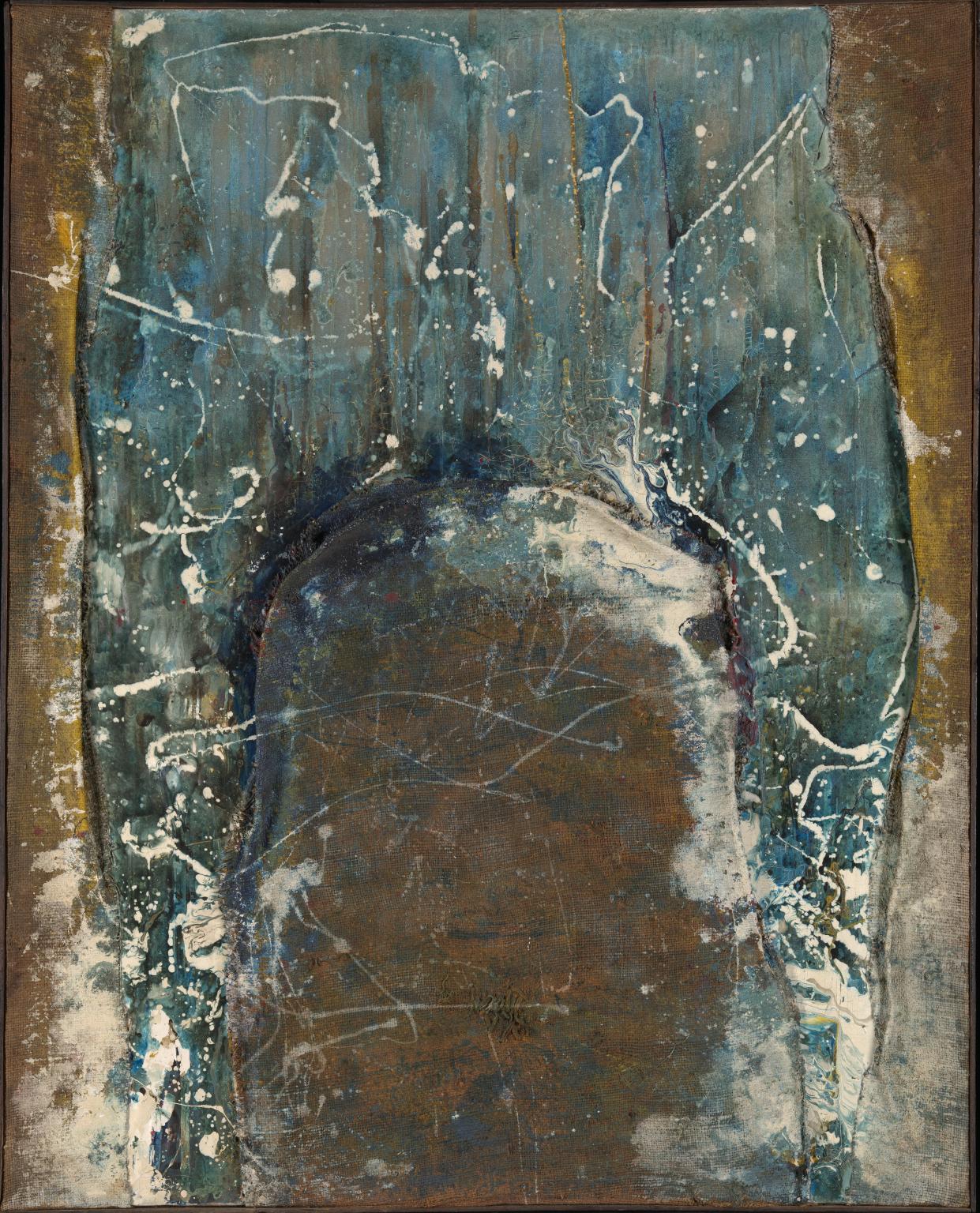
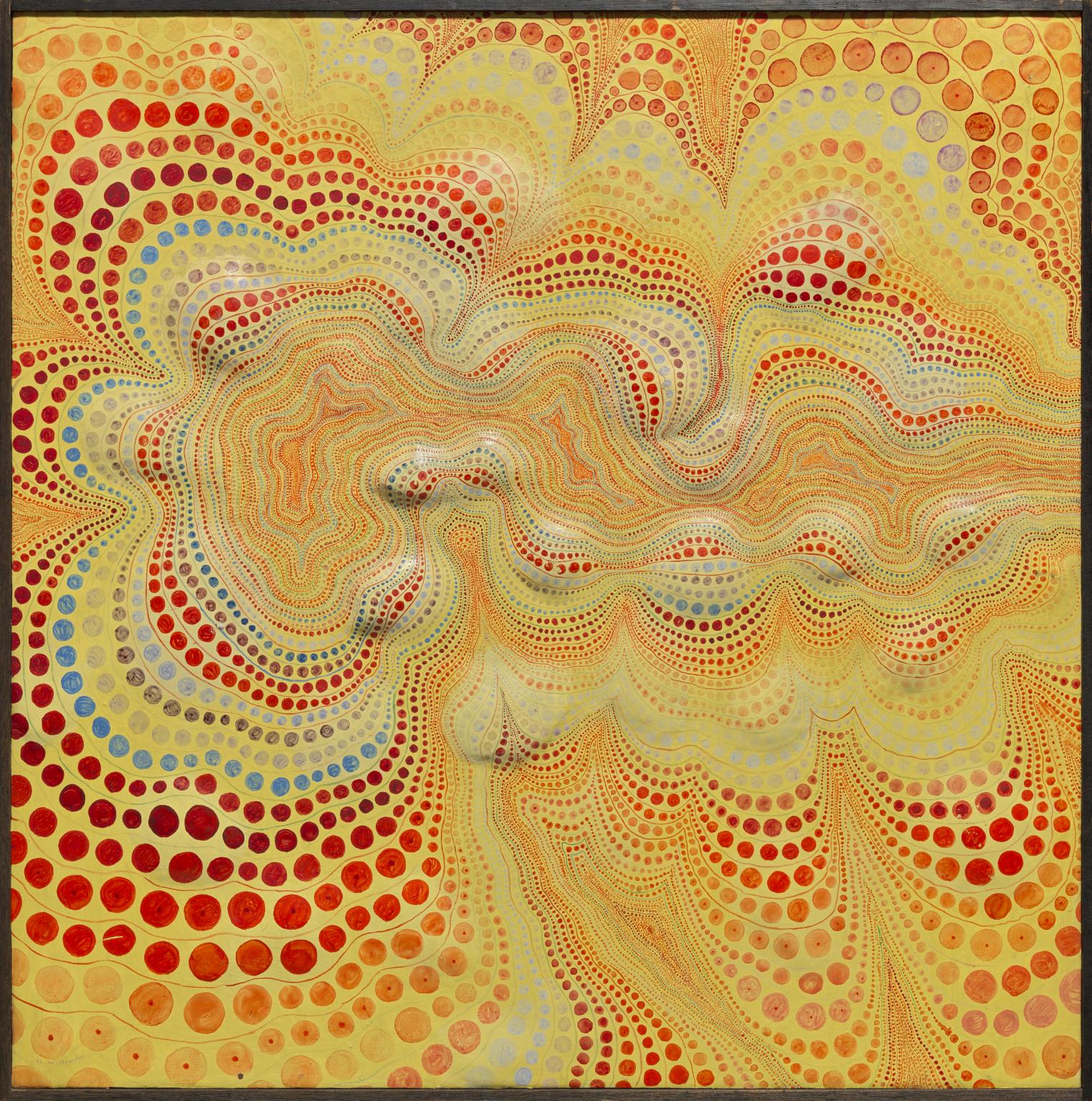
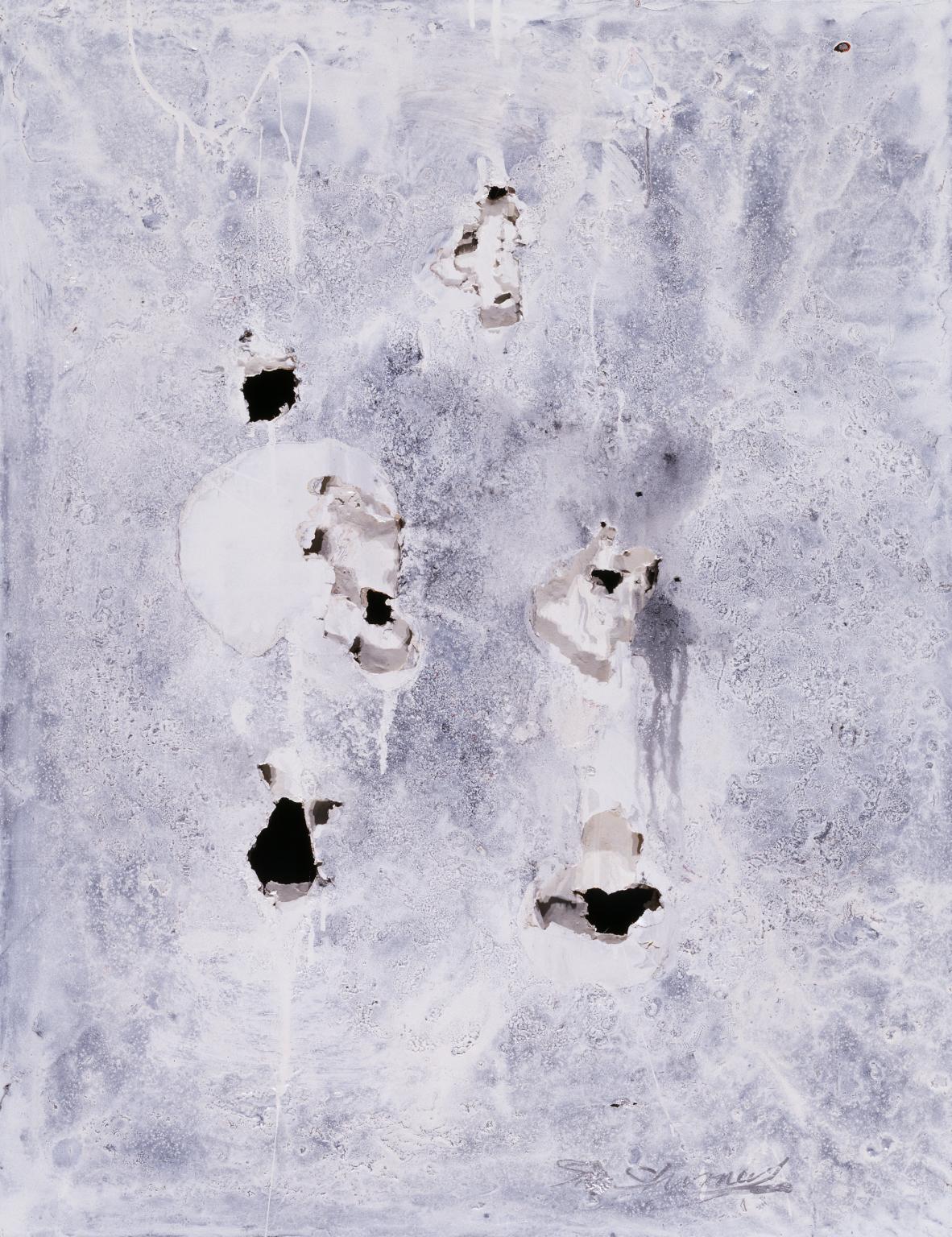
Sorry, no image available
Sorry, no image available
Sorry, no image available
